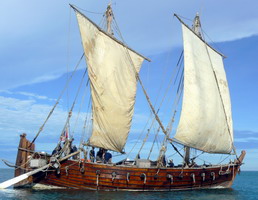Digging for gold
 Tuesday, March 22, 2011 at 5:09AM
Tuesday, March 22, 2011 at 5:09AM There are times, working on this project, when I feel more like an archaeologist than a writer.
True, I'm working with information, not rock and dirt, and my tools are my laptop and my 4x6" cards, rather than pick and brush. Still, I find myself sifting through layer upon layer of historical detritus, accumulated assumptions and broken chains of evidence, searching for a few kernels of confirmed fact. Or at least, some degree of probable plausibility. There's no question that I will have to hang a great deal of my own guesswork and narrative imagination around the sparse framework of fact and probability that I dig up, but there are times when I feel like a paleontologist trying to imagine an entire dinosaur - bone structure, skin texture, diet, mating behavior, life cycle, and all - from a single knuckle bone.
I really have no one but myself to blame. After all, it's not as though someone held a gun to my head and forced me to write a book about early 8th century Byzantine and Arab history. Still, it's hard to resist the temptation to whine a bit about the dearth of primary sources. Even secondary sources covering the Siege of 717/8 are few and far between - which surprises me, since there seems to be fairly wide agreement that it was one of the pivotal events of the medieval period, at least as significant in the broad flow of world history as the Battle of Tours, which has received significantly more attention.
So I dig around the edges of the topic, searching for clues that will help me bring the period to life. And every now and then I come across nuggets of pure gold, veins of it even. One of these came this morning, when I found articles from an entire colloquium on Constantinople that Dumbarton Oaks hosted in 1998. Now, mind you, I've come across quite a number of Dumbarton Oaks publications prior to this, and have made thorough use of some of them - particularly the Economic History of Byzantium, which, while dry as dust at times if you're not utterly in need of the information it contains, is a precious resource full of an incredible wealth of insight on how people related to one another, in trade and taxes and social life, across the whole broad scope of Byzantine history. Still, I had somehow missed this colloquium on Constantinople. The oversight made me dig more deeply, wondering what else I had missed. I wound up spending several hours this morning going through the entire catalog of their past publications back to the 1960s - and there's still more to do, twenty years or so before that. (When you're researching something that happened 1300 years ago, scholarship that is a mere half-century old is considered "recent," folks.) The Jewel of Muscat. Photo by AsianYachting.A narrower, but more captivating find came a few weeks ago, when I stumbled upon the Jewel of Muscat Project - an enormous trove of video, photographic, and historical information about medieval Arab shipbuilding techniques, tied to an upcoming National Geographic documentary about the reconstruction of an early medieval Arab treasure ship found off Singapore. (Thanks again to Mitch Williamson for setting my mouse on the path to discover this one.) Sure, it's probably overkill to get this deep into medieval Arab naval architecture, given the relatively small role it plays in my novel - but I'm sure the detail will prove invaluable at making the relevant section feel real.
The Jewel of Muscat. Photo by AsianYachting.A narrower, but more captivating find came a few weeks ago, when I stumbled upon the Jewel of Muscat Project - an enormous trove of video, photographic, and historical information about medieval Arab shipbuilding techniques, tied to an upcoming National Geographic documentary about the reconstruction of an early medieval Arab treasure ship found off Singapore. (Thanks again to Mitch Williamson for setting my mouse on the path to discover this one.) Sure, it's probably overkill to get this deep into medieval Arab naval architecture, given the relatively small role it plays in my novel - but I'm sure the detail will prove invaluable at making the relevant section feel real.
I'll get to work on adding a "Resources" section to this site shortly - as well as a set of links to the friends, mentors, and contributors who are actively helping me bring this book to life. Including Matthew Herbst, Director of the Making of the Modern World program at UC San Diego and star of a series of podcasted lectures that I've been enjoying, who spent probably more time than he could spare talking to an aspiring author about Byzantine history and serving as a sounding board for my crackpot ideas about Leo III, Maslama, and the role of fiction in illuminating history.
Back into the mines, now. I'm hoping to add another segment to the site soon, where I can share some of the more interesting tidbits and stories that I've come across in my archaeological dig - like how I think Justinian II snuck into his own capital city with a few good men and retook it from the successor-usurper to the man who deposed him. Skullduggery worthy of James Bond, surely, especially when you consider the fact that Justinian had a golden nose. (Or perhaps had had plastic surgery at the hands of, most likely, an Indian doctor. Both are entirely plausible.)
Reader Comments (1)
David, we your most prominent followers aren't going to know if your "facts" are correct or not. You are going to be teaching us about Byzantine history. But you are/were never one to do things half way - so go at it and enjoy yourself. We look forward to reading your book. Mom